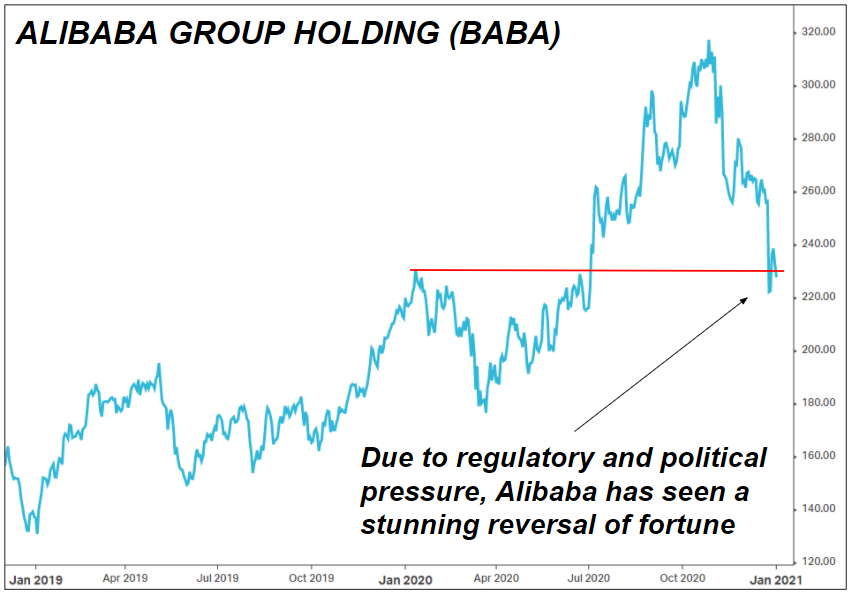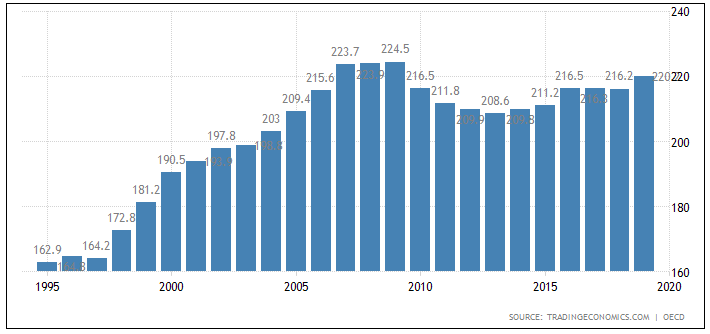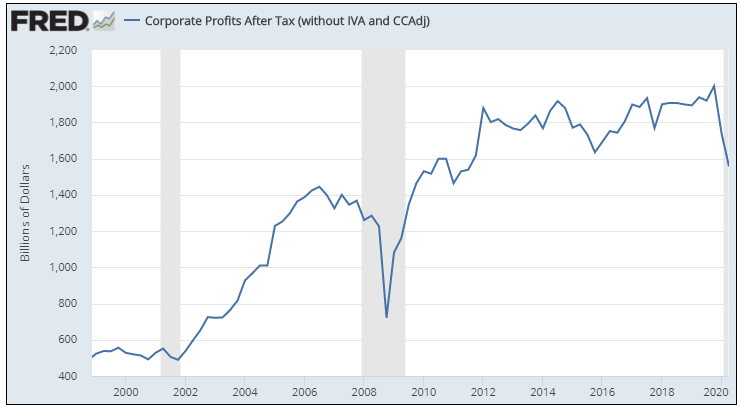Editor’s Note: When we explained the concept of money earlier this year, we immediately received a thoughtful follow-up question on inflation. That inquiry led to the next “best of” piece in our lookback series, “Where does inflation come from?” The short answer is that inflation is an emergent property, born of a complex adaptive system. For the longer answer, read on. –JCL
A reader asked a great question about inflation. Here it is, slightly edited for clarity:
Your article, Money is a Social Protocol, Built on a Network, Enabled by Technology, is one of my favorites. It describes the actual essence of money, and instead of employing empty phrases like, “Money is a medium of exchange,” which is true, but is obvious and not instructive.
Rather, your article discusses what money actually is to real people in real social networks in the real world and it is profound.
Alas, then you say:
“A currency can also be degraded by way of hidden inflation, which happens when an increased supply of currency enters the network.
“If the general supply of money increases, and the money is being lent and spent (as opposed to just sitting in bank vaults), prices can seem to rise mysteriously with no one able to pinpoint why. The hidden reason is because a greater volume of currency is chasing a relatively smaller volume of goods and services, causing prices to naturally rise.”
Who actually sees that the money supply is rising relative to goods and services? Who decides to raise prices as a result? If Mr. Mysterious didn’t raise prices, everyone, including him, could buy more and have more stuff since there is more money to go around.
Please consider publishing another article laying out exactly how inflation happens, who does it, why they do it, what is their benefit for doing it, how they sneakily do it, and why does no one stop them?
I know I am missing something but have no idea what it is.
Thanks, and keep up the super writing.
Thanks so much for the kind words! As a reminder to all readers, if you have a question, or a comment, or find yourself curious about something, feel free to write in via [email protected].
When we say inflation can be mysterious, we don’t mean it’s a literal mystery. Rather, when inflation gets going, there isn’t any single cause to point to, and thus no simple way to control it or identify the source. This can be especially true with monetary inflation, where the public may not be aware the supply of money and credit is increasing.
To understand inflation, it helps to understand complexity, because inflation is an emergent property generated by a complex adaptive system.
A complex system is a thing with multiple components, where the components interact with each other in unpredictable ways.
For instance, a tropical storm that turns into a hurricane is an example of a complex system.
We can understand the science of hurricanes, but we can’t predict their formation in real time, because there are too many variables interacting within the weather pattern as it happens.
That is what it means for a system to be complex, rather than complicated.
A complicated system may have lots of moving parts, but straightforward transmission mechanisms. You can reverse engineer the linkages of a complicated system. With a complex system, everything tends to affect everything, making the linkage pathways hard or impossible to determine.
A complex system that is also adaptive — making it a complex adaptive system — adds another layer of mystery to the mix.
A complex adaptive system will actively respond to feedback, and behaves differently in different environments, and may even react to its own reactions and respond to its own responses.
Complex adaptive systems can create positive feedback loops, where a trend becomes self-reinforcing, causing the trend to feed on itself and grow more powerful over time
For example, think of what happens in the midst of a financial crisis: People get scared and withdraw assets from banks. The banks say reassuring things, but their reassurance that “everything is fine” only frightens people more. The fear feeds on itself, causing asset reserves to shrink as larger quantities of assets are withdrawn, until the banks face a liquidity crisis, on their way to a solvency crisis.
At this point, the government is forced to announce some kind of intervention. If financial contagion occurs, the fear leaps from country to country and goes international.
Resonating feedback loops in complex adaptive systems are the means by which all manner of extreme events can happen, from market crashes, to world wars, to the rise of dangerous mass movements.
For more on this topic, an excellent book to read is Ubiquity: Why Catastrophes Happen, by Mark Buchanan.
If you want to better understand the science of how markets behave under stress — and why extreme events happen far more often than one might expect, and why “fat tail” phenomena appear to be everywhere — you will love it.
As mentioned earlier, inflation can feel mysterious in regard to its origins because inflation is an emergent property, born of a complex adaptive system. Under the right circumstances, it can seem to appear out of nowhere.
An emergent property is a phenomenon that seems to have no source — because it emerges from an interplay of behaviors within a system.
We can find emergent phenomena in all kinds of places. Consider birds and termites, for example.
When geese migrate, they fly in a highly aerodynamic V-shape that helps conserve energy and reduce wind drag. The lead goose experiences the greatest wind drag, but then drops back in a rotation from time to time, so a fresh goose can take the lead.
This V formation is a super-efficient way to go, but there is no plan to create it, and no deliberate coordination among the geese. The V simply emerges as a natural behavioral outcome, based on the instinctive programmed behavior of each individual goose.
In 1986, a computer graphics expert named Craig Reynolds designed an artificial life program called “Boids,” meant to simulate the flocking behavior of birds.
With the Boids program, Reynolds demonstrated that, if you programmed a few simple rules into each boid — which was really just a blob of pixels guided by a few lines of code — and then ran the program with the boids placed close together, they would flock just like birds do.
With the Boids program, simple rules begat complex group behaviors that were not found in the code. That is what it means for an outcome to be emergent.
Or think of giant termite mounds, which can sometimes last for thousands of years, and which occasionally look like elaborate alien cathedrals with tall gothic spires.
There is no such thing as a termite architect, and the towering spires of these mounds are not planned. Rather, a simple set of building behaviors programmed into each individual termite — under circumstance X, do Y — leads to the emergence of the spires.
Emergence is a constant theme in nature. It is also present in human organizations. For instance, where does company culture come from? A leader might set the tone, but in truth the culture sort of bubbles up, a resulting mix of collective behaviors and beliefs.
Market prices can also be emergent. Who sets the closing value of the S&P 500 each day? In a certain sense, nobody does. In another sense, everybody does. Price discovery is emergent, born of countless buy-and-sell decisions.
Inflation, too, is an emergent property because, when it happens, nobody controls it or directs it from the top down. It emerges as a bottom-up response.
Consider the phenomenon of McDonald’s drive-through workers in North Dakota getting paid $20 an hour — a substantial episode of wage inflation — during the Bakken shale boom. How did this happen?
When the Bakken shale boom took off, western North Dakota suddenly found itself bustling with shale workers. These workers needed places to eat, along with all kinds of other accommodations — housing, medical and dental services, entertainment, places to buy consumer staples, and so on.
The explosion of economic activity from the Bakken shale boom thus created a job shortage, because all kinds of local jobs were needed to support the expansion of the local economy spurred by an influx of shale workers.
All of this activity in a once-sleepy place meant that workers were hard to find, which in turn meant wages started to rise in order to attract scarce labor.
This, in turn, meant McDonald’s couldn’t find workers at its normal wage — so it ultimately raised the wage for drive-through workers to $20 an hour.
Because inflation is an emergent property, it can, and does, bubble up from the micro behaviors of a great many individuals. This is how asset bubbles happen, too.
As a general rule, nobody sets out to deliberately create an asset bubble. Instead, many different entities, acting in response to their own local circumstances, can collectively drive prices up with nobody orchestrating the change.
Like the termite colony or the V-shaped flock, there isn’t any top-down decision maker. It just happens.
This is especially true when the supply of money and credit is artificially increased.
With money and credit levels rising, consumers may be willing to spend more — simply because more currency is locally available to spend — which increases the aggregate level of demand.
Providers of goods and services then notice that demand is rising, so they decide to raise prices a bit. Meanwhile, thanks to an increase in credit, it is easier to get consumer loans and business loans, so businesses go into expansion mode, which results in more hiring, or higher wages in worker’s pockets. This increases the propensity to buy stuff, which increases demand relative to supply, which causes prices to rise yet again.
That whole chain of events can happen through an uptick in the supply of money and credit, even if nobody knows the supply of money and credit has increased.
This is because each individual actor in the system is responding to their own individual setup. They as an individual have a little bit more money, so they buy a bit more. Or they as a business are seeing healthy demand, so they raise prices a bit. Decisions are narrow and local. The overall inflation result is emergent.
Because inflation is an emergent property, and because an increase in the supply of money and credit can create inflation all by itself, the resulting implications can be strange.
For example, there is a strong argument that the Spanish housing bubble of the mid-2000s was largely created by German banks. The Spanish housing bubble was ultimately not so much about the choices of the locals, as the decisions of bankers in a different country.
How did German banks fuel a Spanish housing bubble? By pumping Spain’s financial system full of low-cost capital, which in turn fueled a mortgage boom and a real estate development boom, which then created a feedback loop which fed a housing bubble.
Germany is a surplus country, meaning Germany as a country tends to export more than it imports, creating a surplus of export profits taken in from abroad.
Meanwhile, instead of circulating these profits back into the German economy, in the mid-2000s the profits mostly piled up in low-activity corporate bank accounts.
The German banks, meanwhile, were scratching their heads as to how to be more profitable, with lending activity in the German economy relatively quiet.
The German banks then realized they could lend out their excess capital to Spain, where the economy was hotter and money was moving around. The extra capital that flowed into Spain from Germany then turned an active Spanish housing market into a full-on bubble, through a feedback loop of cheap loans and rising construction.
At no point was there a top-down figure in Germany who told the banks, “start pouring your money into Spain,” just as over in Spain, no individual home buyer or builder decided to willingly participate in a housing bubble.
All of the participants, in Germany and Spain alike, were acting in their own narrow interest, based on the set of circumstances directly in front of them.
The asset inflation that drove a bubble just sort of bubbled up, no pun intended, as a form of emergent behavior born of the interacting parts of a complex adaptive system.
A key point here is that nobody really controls a complex adaptive system.
With a large and powerful complex adaptive system — and markets represent one of the largest interlinked series of complex adaptive systems in the world — all you can do is try to influence the system, sort of tinker with the inputs and see what happens.
This also explains why a highly successful economic region, like Silicon Valley, can’t simply be replicated or copied.
Silicon Valley is a complex adaptive system with feeder inputs going back decades. Even if someone knew the exact recipe for creating Silicon Valley 2.0, they could never assemble the same ingredients.
Getting back to inflation, there are many different kinds of inflation. There is monetary inflation, asset inflation, wage inflation, and cost-push and demand-pull inflation, and so on.
Just to make things fun, there are also different varieties of deflation, and even disinflation (when inflation is still present, but the inflation rate is falling).
The mix of inflation types is diverse because a complex adaptive system can have dozens, hundreds, or even thousands of emergent outputs, all at the same time.
Inflation is also hard to pin down to the degree it is driven by expectations. Human behavior is especially tricky to model because behavior patterns can bridge the gap between perception and reality.
For instance, if enough people within a monetary system believe monetary inflation is real, their belief alone can make it a self-fulfilling prophecy by way of emergent behavior, in the same manner that fear of a banking crisis can turn into a real banking crisis.
Imagine that Alice is worried about inflation, so she sells the bonds in her portfolio and buys gold and Bitcoin instead. Bob thinks Alice is smart, so he follows her lead and does the same thing.
Craig, who is friends with Alice and Bob, thinks inflation is coming, too — and because Craig is a business owner, he decides to buy a bunch of inventory early, before prices go up.
Doug, the supplier who sells to Craig, sees demand going up from customers like Craig, so he raises prices. Alice notices the price hike from Doug, thinks “Ah-ha, I was right!” and starts converting her incoming dollars into gold and Bitcoin at an even faster rate.
Now multiply individual actions like the ones described above across the collective behavior patterns of tens of millions of people.
Then imagine the data starts to show signs of monetary inflation — asset prices up, currency values down, various other prices rising — and more people start to notice the inflation trend and talk about it, and the feedback loop gets stronger, and starts to reinforce itself.
And if, meanwhile, the supply of money and credit is steadily increasing — because, say, the government is spraying money around in the midst of a pandemic, and the central bank is buying junk bonds — excess currency may keep getting swapped out for assets, as savers and investors buy whatever they can for the sake of ditching the currency. This reinforces the feedback loop, and you wind up where we are now.
In some ways it’s all a giant game, like Hot Potato or Musical Chairs. But this game is for adults instead of kids, with real financial consequences on the line — and sometimes with war or hyperinflation or economic depression as a dystopian grand finale.
If you really understand the game — and few do, because complex adaptive systems are so tricky — you can use that knowledge, combined with vigilant observation of the system, to determine which assets to buy, and the right time to buy them, and in so doing turn knowledge into profit.








